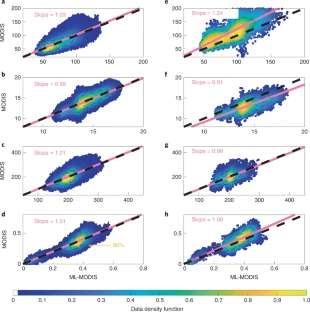Science Daily August 1, 2022
Aerosol–cloud interactions have a potentially large impact on climate. The impacts derived from climate models are poorly constrained by observations because retrieving robust large-scale signals of aerosol–cloud interactions is frequently hampered by the considerable noise associated with meteorological co-variability. An international team of researchers (UK, Switzerland, Germany, USA – NASA) disentangled significant signals from the noise of meteorological co-variability using a satellite-based machine-learning approach. Their analysis showed that aerosols from the 2014 Holuhraun effusive eruption in Iceland increased cloud cover by approximately 10%, and this appears to be the leading cause of climate forcing, rather than cloud brightening as previously thought. They found that volcanic aerosols do brighten clouds by reducing droplet size, but this has a notably smaller radiative impact than changes in cloud fraction. These results add substantial observational constraints on the cooling impact of aerosols. According to the team such constraints are critical for improving climate models, which still inadequately represent the complex macro-physical and microphysical impacts of aerosol–cloud interactions…read more. TECHNICAL ARTICLE

Comparison between ML-MODIS predictions and MODIS observations. Credit: Nature Geoscience (2022)